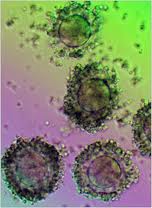Scientists have harvested stem cells from the scalps and brain linings of human corpses and reprogrammed them into stem cells.
Their discovery – that dead people can yield living cells that can be converted into any cell or tissue in the body, has been recognised with the Nobel Prize.
The researchers believe that this discovery could lead to new stem cell therapies for the treatment of mental disorders, such as schizophrenia, autism and bipolar disorder, which may stem from problems with development.
Mature cells can be made or induced to become immature cells, known as pluripotent stem cells, which have the ability to become any tissue in the body and potentially can replace cells destroyed by disease or injury.
Cadaver-collected stem cells are collected from fibroblasts (skin cells) and can be reprogrammed into induced pluripotent stem cells using chemicals known as growth factors that are linked with stem cell activity.
Reprogrammed cells could then develop into a multitude of cell types, including the neurons found in the brain and spinal cord.
Now scientists have taken fibroblasts from the scalps and the brain linings of 146 human brain donors and grown induced pluripotent stem cells from them as well.
Researcher Thomas Hyde, a neuroscientist, neurologist and chief operating officer at the Lieber Institute for Brain Development in Baltimore said that they were now able to culture living cells from the deceased on a far larger scale than previously.
The bodies had been dead up to nearly two days before scientists collected tissues from them. The corpses had been kept cool in the morgue, but not frozen. The researchers found fibroblasts taken from the brain lining, or dura mater, were 16 times more likely to grow successfully than those from the scalp. This was expected, since the scalp is prone to fungal and bacterial contamination just like any other part of the skin.
These contaminants can ruin any attempt to grow fibroblasts in lab dishes.
Surprisingly, scalp cells did proliferate more and grew more rapidly than dura mater cells.
“This makes sense — the skin is constantly renewing, while the turnover in dura mater is much slower,” Dr Hyde said.
Future therapies
Cells from corpses might play a key role in developing future stem cell therapies. Successfully reprogramming induced pluripotent stem cells so they behave like the cells they are meant to replace means that samples of the mimicked cells must be present for comparison. Cadavers can provide brain, heart and other tissues for study that researchers cannot safely obtain from living people.
“For instance, we can compare neurons derived from fibroblasts with actual neurons from the same individual,” Hyde said. “It tells us about how reliable a given method for deriving neurons from fibroblasts is. That can be crucial if, for example, you want to create dopamine-making neurons to treat someone with Parkinson’s disease.”
Studying how induced pluripotent stem cells develop into various tissues could also shed light on disorders that are due to malfunctions in development.
“We’re very interested in major neuropsychiatric disorders such as schizophrenia, bipolar disease, autism and mental retardation,” Hyde said. “By understanding what goes wrong with the brain cells in these individuals, we could perhaps help fix that.”


